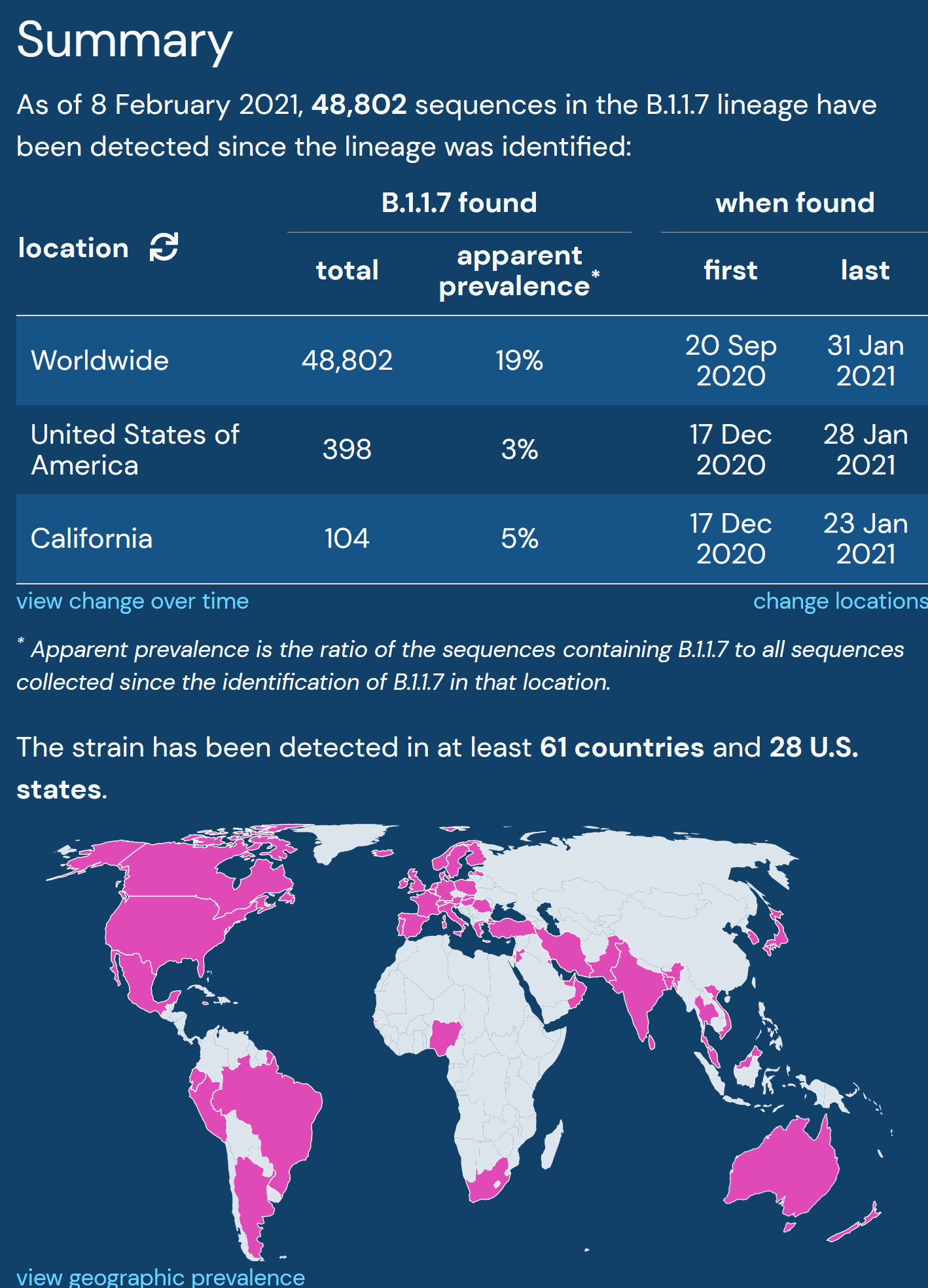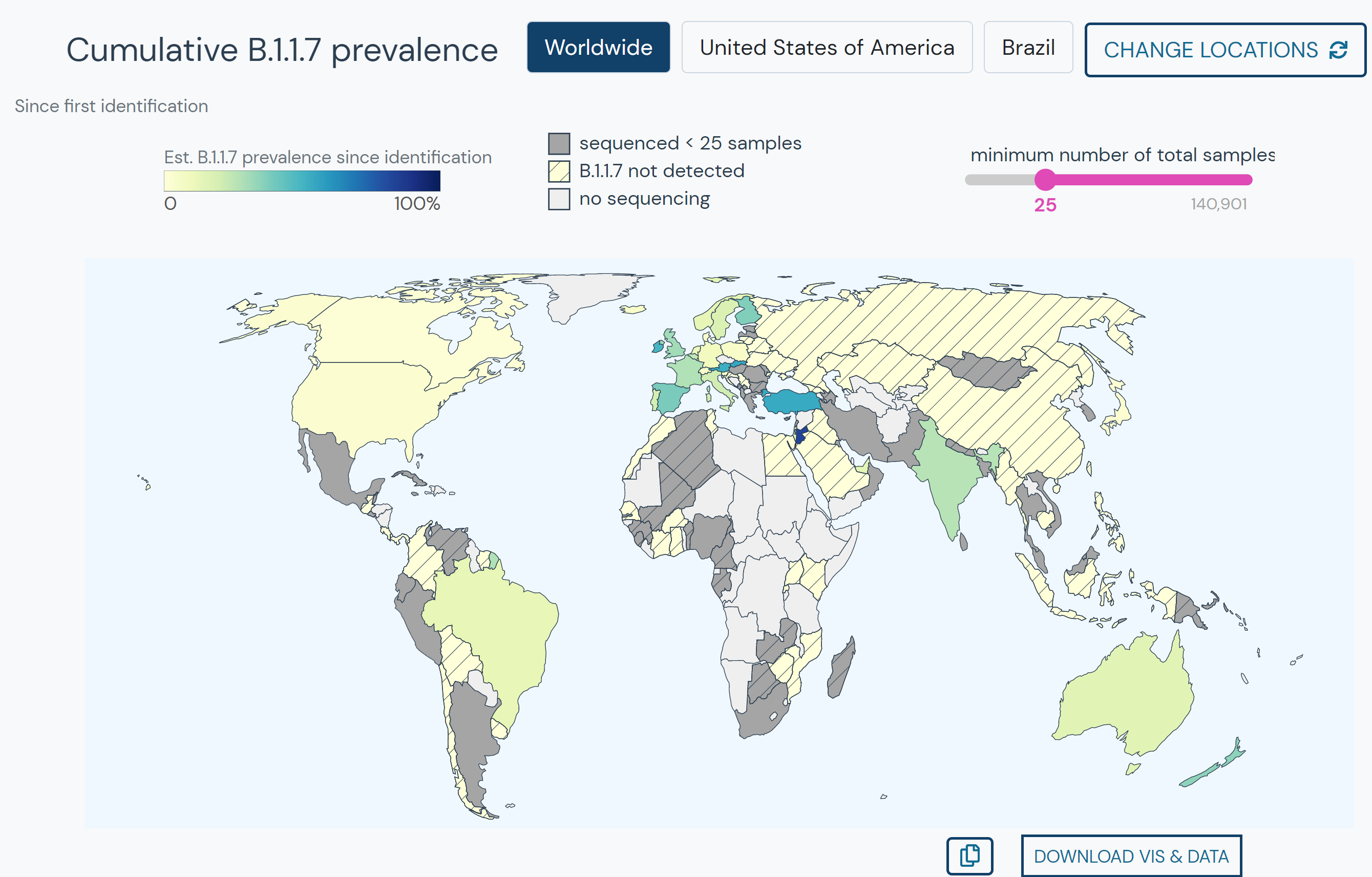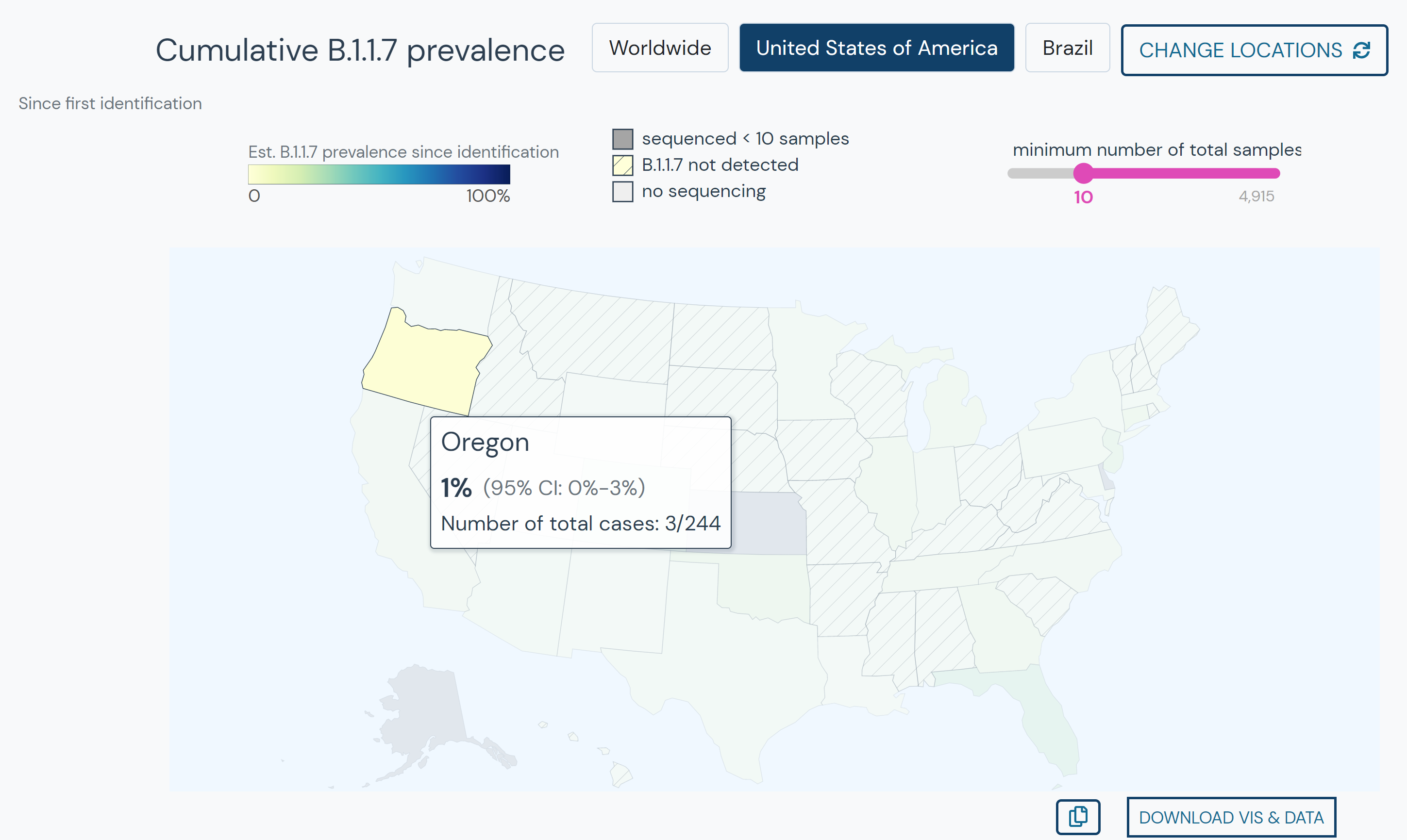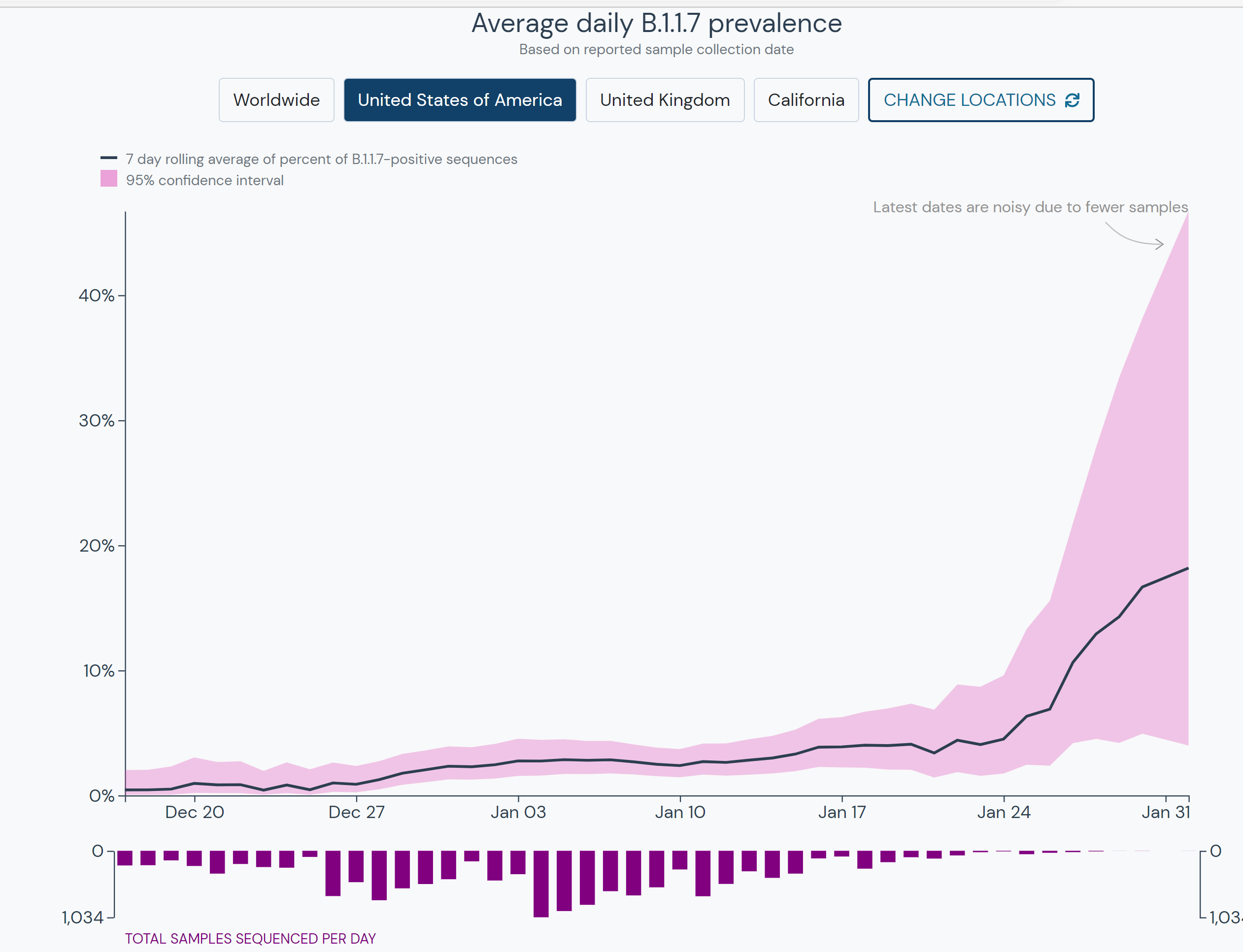The Center for Viral Systems Biology at Scripps Research is tracking the prevalence of new strains of SARS-CoV-2, the virus behind the COVID-19 pandemic, in an interactive dashboard for viewing daily reports.
As concerns surrounding several COVID-19 variants have been developing, researchers around the world have shifted focus in an all-hands-on-deck, round-the-clock effort to uncover more about the mutations.
All viruses undergo natural mutation. Scientists are investigating how SARS-CoV-2 mutates, how fast mutations happen, and how this will affect public health response. Concerns are growing because these mutations have shown to be significantly more transmissible than other variants. The impact the mutations will have on vaccine development also remains unclear. This includes the B.1.1.7 lineage, also known as Variant of Concern 202012/01 (VOC-202012/01) or 20B/501Y.V1. This mutation was first identified in the UK in early December 2020 and has since been detected in the US and other counties.
In investigating emerging strains of SARS-CoV-2, one tool has been missing from the toolkit – a standardized hub of information about these mutations. To stay updated on the information needed to fight the pandemic, it is imperative that researchers have access to open source tools. It is vital to an informed citizenry that the public have access to open data and resources, as well. That is why the team behind Outbreak.info decided to build a dashboard scientists and other individuals can use to find an easily accessible, reliable source of aggregated information that is updated daily.
The SARS-CoV-2 Mutation Situation Reports dashboard includes daily situation reports for mutations and lineages (series of mutations). Using data generated from the GISAID Initiative, these reports include five key features:
#1 Defining the mutations in the strain
The dashboard includes interactive mutation maps for easy comparison between lineages. Amino acid mutations are indicated by circles. Deletions are annotated by deltas.

Each report also contains a collapsible table of the key mutations that define the strain.
#2 Tracking the number of sequences detected
The SARS-CoV-2 Mutation Situation Reports can be customized to view and compare any set of locations at the state, country, and global level.
Furthermore, the report summarizes the total number of sequences that have been detected worldwide, as well as the number of countries and US states experiencing the strain.

#3 Monitoring geographic prevalence over time
Cumulative prevalence of the strain over time, from first detection to current date, is plotted on an interactive world map.

Countries can be more deeply explored and prevalence rates can be calibrated by easily adjusting the minimum number of total samples.

#4 Tracking average daily prevalence at global, national, and state levels
The SARS-CoV-2 Mutation Situation Reports present seven day rolling averages for prevalence of the mutation. This can be examined for any location at state, country, and global levels. This is presented with confidence intervals and counts of sequenced samples per day, as well as annotations that make the data simple to understand.

#5 Staying updated on the latest research as it’s published
Outbreak.info aggregates journal articles, preprints, clinical trials, protocols, and other research across varying scholarly sources in its searchable interface. The SARS-CoV-2 Mutation Situation Reports each contain links to the latest publications about the strains.

Learn more about using Outbreak.info to find resources about COVID-19 variants.
The SARS-CoV-2 Mutation Situation Reports interface gives the world a way to track strains of the virus and stay updated on COVID-19 changes as they occur. Moreover, it gives researchers an advantage in breaking ground in the COVID-19 pandemic. Keep checking back as new features are continuously added.
